W. Terry Whalin's Blog
November 30, 2025
Our Days Are Short

By Terry Whalin @terrywhalin
Each of us have a limited number of days on this planet. We may not think about it but sometimes this fact comes roaring our lives.
In my Bible, I have a series of friends photos that I pray for every day. A number of these people are missionaries that I served with through Wycliffe Bible Translators. A few weeks ago one of these friends that I’ve known since the 70s and appeared in great health. He had a heart-attack and died. While I’ve often read heart attacks are a leading cause of death, the passing of this friend touched me personally--way more than any statistic.
As I’ve grown older and had many different experiences, I’m aware that our days on this planet are not endless but overall short. As writers, we need to be aware of the shortness of time and use this limited resource wisely. In Latin the term carp deim or pluck the day and seize the moment.
Use Your Time Wisely
The bulk of these articles on The Writing Life give insights and encouragement for your work in publishing. I wanted to mke sure this article also includes this element. For the rest of this article, I’m highlighting a set of principles or maxims which are buried in the final pages of both versions of Book Proposals That Sell . I wrote the original version of this book as a frustrated acquisitions editor trying to receive better submissions. The book has helped many writers and has over 150 Five Star Reviews and exceeded any of my expectations.
12 Maxims for Any Writer
Throughout my career, I’ve used these operating principles. I hope these maxims will aid you in your overall writing career.
1. Never forget the impact of your words—positive or negative. Most days, I feel the pressure of motivation to make money as a freelancer. I’ve got bills and obligations which demand payment. Yet if you are so money-driven that you never make any decisions about your writing except ones which are motivated from finances, it will be difficult for you to advance in nonfiction or fiction. Don’t get me wrong. I want to be fairly compensated for my work but I also want to enjoy my work and what I do day in and day out. You need to be conscious of your motivation behind your writing and let that drive your daily efforts.
2. Never forget your writing is a privilege and a business—so seek to maintain balance. Too many writers hesitate to ask for their materials or for a decision about a query or proposal. They send it out once or twice, then it’s rejected and they don’t properly market or even follow-up.
3. Celebrate your writing successes. Never lose the wonder of the opportunity. At another conference I attended—a secular writing conference in Southern California—I was fascinated by a secular novelist and his message. While waiting to ask him a question after the session, I turned to another person and asked if she had taken this instructor’s writing class. The woman puffed up her face in disgust and replied, “No, I’m a published author.” Just because our material is printed in magazines or books, it should not build us up in pride. Believe me, sometimes it’s difficult but as writers we need to keep things in balance, especially when it comes to books.
4. Believe in the quality of your work and the value of your message. Surprises always happen. I work hard at my craft and perseverance is a key factor. Don’t get me wrong but I love to receive my material in print. It’s a surprise and a special blessing. It’s the new box of books hot off the press or the magazine article in a missionary publication. I marvel at the grace in my life. I’d encourage you to absorb the same attitude no matter how many books you publish.
5. Expect to serve an apprenticeship. It’s a false expectation to go from nothing to book contracts. Everyone is expected to move through the ranks of this business. It takes diligence and perseverance to succeed.
6. Learn all you can from every possible source. If you approach life in this fashion, you will find that you can learn from a multitude of sources.
7. Act wisely and thoughtfully. Haste usually makes waste.
8. Never resist rewriting. Your words are not etched in stone.
9. Never resist editing. Again, your words are not etched in stone.
10. When you receive advice about your writing, learn to evaluate it critically. Sometimes you will get advice from a fellow writer or a family member and it doesn’t “feel” like something you should take. Follow that instinct.
11. Treat editors as the coach on your team. They know their audience, so respect their counsel and only reject it with good reason.
12. Never rest on your laurels. Be looking for your next opportunity. I’ve discovered that writing opportunities abound—particularly when I’m actively looking for them. As I read through each of these principles, I know the stories and experiences which are baked into each one. My hope is they will encourage you to seize the day and continue moving forward with your writing life. You are the only person who can stop the writing journey through your quiting (which I hope you don’t do).
In the comments, let me know which principle spoke to you and your writing life. Or tell me about another principle which is missing from my list. I look forward to your comments.
Tweetable:
It’s easy to believe our days are endless. This prolific author and editor encourages us to understand our days are short. Also this article highlights 12 maxims. (ClickToTweet)
My Writing In Other Places:
With these articles, I encourage you to publish your work beyond your blog in other places. Below are three articles which were published in other online locations than this blog.

At Almost An Author, I guest blog each month about an aspect of book proposal creation. This month I asked and answered a common question: Why Do Editors Take So Long with my Submission? at: https://bit.ly/3Xk7Urg

This time of year, many writers feel like they have missed their goals. At Writers on the Move, I guest blogged about how writers can meet their goals and how to create a strategy for their writing at: https://bit.ly/48lT4Xe
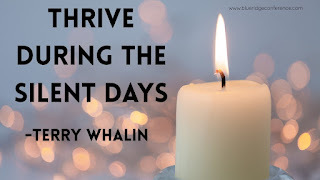
Each year between Thanksgiving and New Year’s Day, the majority of publishing is silent. At the Blue Ridge Mountains Christian Writers Conference Blog, I encourage writers to thrive during the silent days at: https://bit.ly/3JTpbo6
New Podcasts:
In these articles, I’ve encouraged you to use PodMatch or some similar tool to book and record podcasts. Last week two more of my podcast recordings were launched:
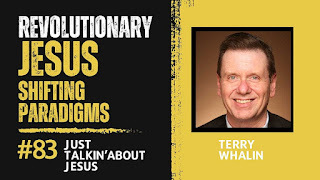
Jan Johnson and I spoke about Revolutionary Jesus: Shifting Paradigms on Just Talkin' About Jesus Podcast. Watch at: https://bit.ly/4pwPqzM or listen at: https://bit.ly/4p6SVgi
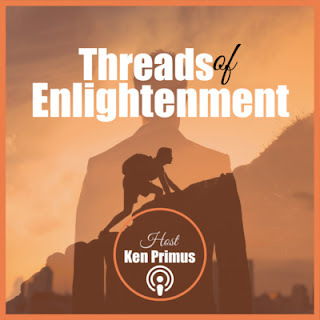
Ken Primus (@ThreadsofEnlig1) and I spoke about the art of storytelling: how powerful stories shape identity and purpose on The Threads of Enlightenment Podcast. Watch at: https://bit.ly/43X2hTB or listen at: https://bit.ly/48qShU4

Even if you self-publish your book, you need to be cautious about your decisions and who you choose to work with for your book production. I’ve met authors who have spent thousands of dollars in the self-publishing process and unknowingly worked with someone in the Philippines and produced a terrible looking book which is only sold online. I’ve heard the unrealistic expectations of writers. I wrote 10 PUBLISHING MYTHS to give authors practical help. You can get decades of insights in 10 PUBLISHING MYTHS for only $10, free shipping and over $200 of bonuses.
Subscribe to Terry’s Newsletter:
During the last year, once a week I’ve been sending a short free newsletter. Just follow this link to subscribe. When you are added to the newsletter, you will receive a FREE 87-page Ebook which is packed with insights for every writer.
Get these articles on your email:
Since 2004, I have blogged about The Writing Life over 1,800 entries and one of the top 27 content writers. With this simple form, each week you can get my new articles, encouragement and insights at: https://t.co/W6uU64u6aA
Published on November 30, 2025 04:30
November 23, 2025
Gratitude Is Not Just One Day
By Terry Whalin @terrywhalin
Once a year, the people in the United States pause for a holiday called Thanksgiving. It’s a wonderful time to celebrate with family and friends. Depending on the year, we travel to these gatherings and plan for special food and even individual traditions of expressing gratitude. Through the years, I've always loved the celebration of Thanksgiving. In recent days I’ve read a number of articles tied to this holiday. In this article, I want to take a different twist on gratitude. I contend gratitude needs to fill our writing life much more than once a day. In fact, I encourage you to incorporate thankfulness or gratitude into your every day life. Here’s some starter ideas for you to bring gratitude into your daily life:
1. Write in a Gratitude Journal. Some writers have been keeping a daily journal since they were young. I’m not one of those people. In fact, for years I resisted the idea of writing my thoughts into a journal. Through the years, I’ve had the opportunity to occasionally go to the Book Expo and wander through their exhibits and pick up books. This event stopped for several years during the pandemic but is returning in 2026. At once of these events, I picked up a casebound, blank journal which caught my attention. Someone suggested writing a daily gratitude journal. I started to fill those blank pages and it has become a daily habit for years. In fact, I have a series of these gratitude journals. I encourage you to use a gratitude journal as a way to continually express your thankfulness.
2. By hand, write thank you notes. It’s rare that I receive a little thank you note in my mail. I've been writing these little notes for years. Often in my mail, I receive a print copy of a book. I pull out a note card and write a thank you to that person. My handwriting has grown poor so I print and even that is hard to read but the sentiment is certainly there with my card. It’s a practice I've been doing for years and learned from bestselling author Richard Foster who celebrated my first book when it was released in 1992. As writers, we can learn gratitude from others and incorporate it into our daily lives.
3. Use the chorus Give Thanks. Many years ago, I interviewed American singer and songwriter Don Moen. In 1986, Don wrote a little chorus called Give Thanks. Follow this link to listen on YouTube. I purchased this little song as a ringtone and have it on my phone. It’s another simple reminder and helps gratitude fill my daily life.
4. Avoid being ungrateful. I understand that Christians have been expecting the return of Jesus since he left thousands of years ago. Some people believe we are in the last days. 2 Timothy 3:2-5 includes a list of some horrible sins during this period. Tucked into the list is one word tied to this article: ungrateful.
As Christian writers, it’s important for us to stand out and be different. Our continued gratitude is one of those ways. What am I missing and what actions are you taking to continually express gratitude? Let me know in the comments below.
Tweetable:
During this season of Thanksgiving, this prolific author and editor believes gratitude is not just one day. Get the details in this article. (ClickToTweet)
New Podcasts:
In these articles, I’ve encouraged you to use PodMatch or some similar tool to book and record podcasts. Last week one more podcast recording launched:

Mitch Carson (@MCarsonOfficial) and I spoke about The Truth About Publishing: Why Authors Must Market Their Own Books on The Amazing Authorities Podcast. Listen at: https://bit.ly/49sJyml
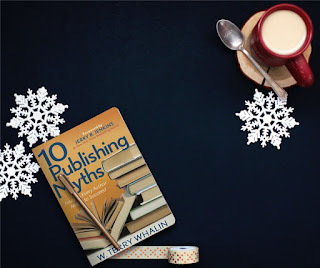
During the last year, once a week I’ve been sending a short free newsletter. Just follow this link to subscribe. When you are added to the newsletter, you will receive a FREE 87-page Ebook which is packed with insights for every writer.
Get these articles on your email:
Since 2004, I have blogged about The Writing Life over 1,800 entries and one of the top 27 content writers. With this simple form, each week you can get my new articles, encouragement and insights at: https://t.co/W6uU64u6aA
Once a year, the people in the United States pause for a holiday called Thanksgiving. It’s a wonderful time to celebrate with family and friends. Depending on the year, we travel to these gatherings and plan for special food and even individual traditions of expressing gratitude. Through the years, I've always loved the celebration of Thanksgiving. In recent days I’ve read a number of articles tied to this holiday. In this article, I want to take a different twist on gratitude. I contend gratitude needs to fill our writing life much more than once a day. In fact, I encourage you to incorporate thankfulness or gratitude into your every day life. Here’s some starter ideas for you to bring gratitude into your daily life:
1. Write in a Gratitude Journal. Some writers have been keeping a daily journal since they were young. I’m not one of those people. In fact, for years I resisted the idea of writing my thoughts into a journal. Through the years, I’ve had the opportunity to occasionally go to the Book Expo and wander through their exhibits and pick up books. This event stopped for several years during the pandemic but is returning in 2026. At once of these events, I picked up a casebound, blank journal which caught my attention. Someone suggested writing a daily gratitude journal. I started to fill those blank pages and it has become a daily habit for years. In fact, I have a series of these gratitude journals. I encourage you to use a gratitude journal as a way to continually express your thankfulness.
2. By hand, write thank you notes. It’s rare that I receive a little thank you note in my mail. I've been writing these little notes for years. Often in my mail, I receive a print copy of a book. I pull out a note card and write a thank you to that person. My handwriting has grown poor so I print and even that is hard to read but the sentiment is certainly there with my card. It’s a practice I've been doing for years and learned from bestselling author Richard Foster who celebrated my first book when it was released in 1992. As writers, we can learn gratitude from others and incorporate it into our daily lives.
3. Use the chorus Give Thanks. Many years ago, I interviewed American singer and songwriter Don Moen. In 1986, Don wrote a little chorus called Give Thanks. Follow this link to listen on YouTube. I purchased this little song as a ringtone and have it on my phone. It’s another simple reminder and helps gratitude fill my daily life.
4. Avoid being ungrateful. I understand that Christians have been expecting the return of Jesus since he left thousands of years ago. Some people believe we are in the last days. 2 Timothy 3:2-5 includes a list of some horrible sins during this period. Tucked into the list is one word tied to this article: ungrateful.
As Christian writers, it’s important for us to stand out and be different. Our continued gratitude is one of those ways. What am I missing and what actions are you taking to continually express gratitude? Let me know in the comments below.
Tweetable:
During this season of Thanksgiving, this prolific author and editor believes gratitude is not just one day. Get the details in this article. (ClickToTweet)
New Podcasts:
In these articles, I’ve encouraged you to use PodMatch or some similar tool to book and record podcasts. Last week one more podcast recording launched:

Mitch Carson (@MCarsonOfficial) and I spoke about The Truth About Publishing: Why Authors Must Market Their Own Books on The Amazing Authorities Podcast. Listen at: https://bit.ly/49sJyml

As I’ve worked in the publishing world for years, I’ve spoken with many authors about their expectations and dreams for their books. I’ve found many of these authors have unrealistic expectations about what will happen with their published book. Many aspects of the publishing process are outside of anything an author can control. I wrote 10 PUBLISHING MYTHS to give authors practical help and take actions no matter what the publisher does for your book. You can get decades of insights in 10 PUBLISHING MYTHS for only $10, free shipping and over $200 of bonuses. Click the link to learn more details.
Subscribe to Terry’s Newsletter:During the last year, once a week I’ve been sending a short free newsletter. Just follow this link to subscribe. When you are added to the newsletter, you will receive a FREE 87-page Ebook which is packed with insights for every writer.
Get these articles on your email:
Since 2004, I have blogged about The Writing Life over 1,800 entries and one of the top 27 content writers. With this simple form, each week you can get my new articles, encouragement and insights at: https://t.co/W6uU64u6aA
Published on November 23, 2025 04:30
November 16, 2025
The Necessity of Continual Experimentation

By Terry Whalin @terrywhalin
There is no 1-2-3 formula to become an author--much less a bestselling author. Instead each of us need to continually experiment with different aspects of the process. As we experiment and fail, then try something else, we will find our course of action. The only action which can stop you is if you quit and give up.
To publish a book, there are basically three paths: traditional, self-publishing and hybrid or independent publishing. Each path involves many choices and these choices can lead you forward or into a holding pattern. I’ve spoken with authors who have gotten tired of building their platform, chasing a literary agent and a traditional publishing deal. They have self-published and spent thousands of dollars in this process. These authors have their book on their own website and Amazon--and no where else because of their choices. I encourage you to check out David Hancock, the founder of Morgan James Publishing, and his new book, The Babylon Blueprint for Authors . While it contains some great marketing ideas for your book, it also has 40 pages comparing the three different paths. Use this link to get a free copy.
As writers, we need to continually experiment, research different options, choose some of them and fail. This week I spoke with an author who is weighing his publishing choices. A number of years ago he published a novel with Morgan James Publishing. After my call with him, I looked into the sales of this novel. I learned in the bookstores (our main market), it has sold a little over 200 copies and only four choices over the last year. No wonder he’s talking with me about doing a relaunch on this novel to get it moving forward.
I gave you these details so you can see (and learn) how within the publishing house we are commuicating with each other. You may have had some situation which prevented you from marketing and promoting your book in the bookstores. Inspite of whatever else is happening in your life, I encourage you to make a little room for continued effort to move readers into the bookstore and get your books. There are thousands of ways so choose one and do it. Also notice the impression these details make on the decision about a subsequent book.
For a number of years, I’ve been speaking with this author about his current nonfiction book. To date, I’ve only received a detailed outline and now he has a draft of his manuscript. I’ve asked for the manuscript and his marketing plan. To get a contract offer from a New York publishing house, takes a great deal of behind-the-scenes work and is a team decision. I can be the champion for the author but the group makes the contract decision. I’m interested to see the book manuscript and marketing plan. The author has to send it to me for the process to continue.
Be Curious
As you continually experiment, I encourage you to be curious and ask questions. Several years ago I listened to the audio book version of Brian Grazer’s A Curious Mind . The book includes fascinating stories like how it took years for the Hollywood community to greenlight and make Splash--which turned into a top grossing film. Grazer encourages his readers to ask good questions and be curious. Over ten years ago, I championed a Morgan James book called The Power of Curosity . I encourage you to locate these books, read them and apply the information into your writing life. We need to be curious and ask good questions.
Follow Mentors
As writers, we need mentors or people who have found success with their actions. Find these people then follow them, read their books, take their online courses and apply the information into your life. I want to make several suggestions in this area. First, follow my posts on X/Twitter (use the link). Notice I will post articles from some people over and over. These authors are some of my mentors that I follow and learn from them. You will have to experiment to find your mentors and they will likely be different than mine. It's all part of the journey of finding success.
For example, Armand Morin followed the traces of success to create a 200-million-dollar business, become a bestselling country music artist and an in-demand internationally acclaimed speaker and trainer. You can learn more reading his book, Success Leaves Traces .
Hire Recommended People
If you need to improve an area of your writing life, ask some of your mentors for a recommendation or do your own research and select someone that you hire. For example, my newsletter needed attention and help. I had several different lists and wanted to merge them together into one list. I didn’t have the time or expertise to learn this skill. Instead I hired an expert and learned from her. The process with my newsletter changes are not finalized or finished. It’s a continual process of learning, experimenting and improving. You will take the same journey with whatever skill you need to gain and adjust.
If You Aren't Making Progress...
Maybe when you read this article, you are stuck and feel like you are not making progress. As I said at the beginning of this piece, it is when you quit that you stop moving forward. Keep pitching in different areas. Continue to learn to write a book proposal and/or a query letter. Also keep making new connections and pitching to other professionals. Like one of my friends told me this week, “To kiss a princess, you have to kiss a lot of frogs.” Your right connection is out there and you will find it if you keep pitching.
Are you continually experimenting? If so, tell me about it in the comments. Or maybe I’m missing something then tell us in the comments.
Tweetable:
According to this prolific author and editor, success in publishing involves the necessity of continual experimentation. Read about the details. (ClickToTweet)
New Podcasts:
In these articles, I’ve encouraged you to use PodMatch or some similar tool to book and record podcasts. Last week one more podcast recording launched:
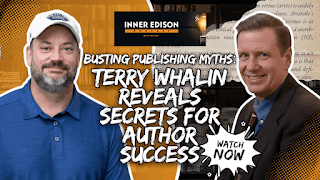
Ed Parcaut (@edparcaut) and I spoke about Busting Publishing Myths and Revealed Secrets for Author Success on Inner Edison Podcast. Listen at: https://bit.ly/49eW9JM
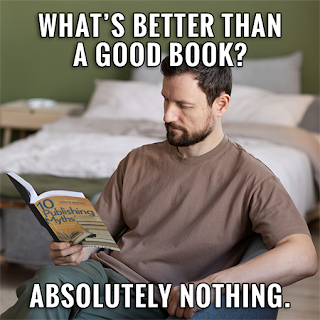
Every type of publishing has its own complexity, and many parts of the process are outside of anything that an author can control. In addition, from speaking with authors, I find many of them have unrealistic expectations about publishing. I wrote 10 PUBLISHING MYTHS to give authors practical help. Get my decades of insights in 10 PUBLISHING MYTHS for only $10, free shipping and over $200 of bonuses.
Subscribe to Terry’s Newsletter:
During the last year, once a week I’ve been sending a short free newsletter. Just follow this link to subscribe. When you are added to the newsletter, you will receive a FREE 87-page Ebook which is packed with insights for every writer.
Get these articles on your email:
Since 2004, I have blogged about The Writing Life over 1,800 entries and one of the top 27 content writers. With this simple form, each week you can get my new articles, encouragement and insights at: https://t.co/W6uU64u6aA
Published on November 16, 2025 04:30
November 9, 2025
Level Up Your Writing Life
By Terry Whalin @terrywhalin
Each of us have limited time but many things are screaming for our attention and time as writers. The number of published books is growing every day and the volume of material pouring into publishers and agents is increasing. Publishing houses are cutting back on their staff and each editor is working on more books. Because these editors are pressured to publish books that sell, whenever they see a “diamond in the rough submission” which has potential, they understand they do not have the time for feedback or development of a manuscript. Instead, they do not respond or send a form rejection.
A Truth Before You Submit
As a writer, you have to pitch and submit your material, before you hit that send button, here’s the truth to remember: You only have one chance to make a good first impression. The reality is you make that impression in seconds. You want to pause and take one last look at that submission before you send it. Do not let the fear of failure or rejection prevent you from sending it (another issue many people have). Instead get your ideas into the marketplace but with wisdom.
When you take one final check on your submission before sending it, I compare it to a look in the mirror before I head out the door to meet with a prospective author about Morgan James Publishing. The details and making that right first impression only happens once.
Change To Level Up
As writers, we need to change and level up our writing life to stand out. In this article, I want to talk about these changes and actions you can take to distinguish yourself from others. Years ago when I was a literary agent, I spent a lot of time helping my clients craft their proposals and submissions. It’s the first impression principle even for well-known agents. They have seconds to catch attention. In today’s marketplace, the agent doesn't have time or energy for such personal and detailed feedback for their clients. Instead, these agents push their clients to craft better submissions. Or the agents connect the author with a freelance editor who can work over the submission. This freelancer is hired for specific editorial work on the proposal and/or partial manuscript.
Find Honest Feedback
 In our writing lives, it’s often a challenge to get honest feedback. You show your writing to your family and they love it. Often they are reluctant to give you their truth. A notable exception in this area is bestselling author John Grisham’s wife. As the first reader of his writing, she uses a red pen to give her feedback and then the couple has vigorious discussions that their children called “book fights.” I encourage you to use this link to watch the full C-Span 58-minute interview. I found it fascinating.
In our writing lives, it’s often a challenge to get honest feedback. You show your writing to your family and they love it. Often they are reluctant to give you their truth. A notable exception in this area is bestselling author John Grisham’s wife. As the first reader of his writing, she uses a red pen to give her feedback and then the couple has vigorious discussions that their children called “book fights.” I encourage you to use this link to watch the full C-Span 58-minute interview. I found it fascinating.
If you can’t get honest feedback from your family, where do you turn? Maybe it is your local writing group or a critique partner. In the early days of my writing life, my writing (and submissions) improved because of my monthly critique group. The critical action is to be aware of your need for such feedback and level up your writing getting it ahead of your submission.
Add Something Extra
When crafting your book proposal or query letter, add some rare details to stand out from others. For example, add a completed foreword from a well-known person into your submission. It takes work on your part to get such a document but it will distinguish your proposal from everything else on that editor’s or agent’s desk.
In your book proposal, add special sales ideas. More than 60% of books are sold outside the bookstore. Can you use your connections to make a special sale to move thousands of copies of your book? Get Beyond the Bookstore by Brian Jud and study the pages to create your ideas in your book proposal. Few people do this creative work and if you do it, you will stand out from the other submissions.
Ask (and even pay for) Help
No writer has all of the information and insight they need before they submit their work--even bestselling authors need editorial help and insight from others. Ask for editorial or marketing recommendations, investigate and choose someone for assistance. The days of Max Perkins (check out this book) are long gone. As writers who want to publish successfully, we have to pour the work into the craft and creation of our submissions. Otherwise we will not capture attention from the editors and agents.
Each of you can do this work to level up your writing life.. It takes a commitment to learning, growth and taking consistent action.
For this article, I was intentional about using an image of a bridge. If the builders don’t create a level bridge then it does not function. In the same way, writers need to use the resources in this article to level up their submissions and find the right connection to get your words into the world. If I can help you, don't hesitate to reach out. It’s why I have my personal email address in my X/Twitter profile.
In the comments, let me know what I am missing or what actions you are going to take in the days ahead to level up your writing life. I look forward to your insights.
Tweetable:
The world of publishing is always changing. This prolific author and editor gives the insights and actions how you can level up your writing life. (ClickToTweet)
My Writing In Other Places:
With these articles, I encourage you to publish your work beyond your blog in other places. Below are three articles which were published in other online locations than this blog.

Each month I blog about some aspect of book proposal creation for the Almost An Author website. I wrote Editors Do More Than Read Submissions: https://bit.ly/3JG2W4D

Is your writing world scarce or filled with possibilities. In an article on Writers on the Move, I wrote about how Opportunity Is Everywhere at: https://bit.ly/43fWhVn

Once a month, I write a guest blog for the Blue Ridge Mountains Christian Writers Conference. Every writer wants to become more productive and in this second article I gave some specific actions. Increase Your Productivity-Part 2: https://bit.ly/4hgmcCl

For many years, I have spoken with individuals who want to publish a book. I’ve listened to their plans and found many of them have an unrealistic idea about the details of publishing. To sell books and succeed, these details are important. 10 PUBLISHING MYTHS is a practical easy reading book to help you. Get my decades of insights in 10 PUBLISHING MYTHS for only $10, free shipping and over $200 ofbonuses.
Subscribe to Terry’s Newsletter:
During the last year, once a week I’ve been sending a short free newsletter. Just follow this link to subscribe. When you are added to the newsletter, you will receive a FREE 87-page Ebook which is packed with insights for every writer.
Get these articles on your email:
Since 2004, I have blogged about The Writing Life over 1,800 entries and one of the top 27 content writers. With this simple form, each week you can get my new articles, encouragement and insights at: https://t.co/W6uU64u6aA
Each of us have limited time but many things are screaming for our attention and time as writers. The number of published books is growing every day and the volume of material pouring into publishers and agents is increasing. Publishing houses are cutting back on their staff and each editor is working on more books. Because these editors are pressured to publish books that sell, whenever they see a “diamond in the rough submission” which has potential, they understand they do not have the time for feedback or development of a manuscript. Instead, they do not respond or send a form rejection.
A Truth Before You Submit
As a writer, you have to pitch and submit your material, before you hit that send button, here’s the truth to remember: You only have one chance to make a good first impression. The reality is you make that impression in seconds. You want to pause and take one last look at that submission before you send it. Do not let the fear of failure or rejection prevent you from sending it (another issue many people have). Instead get your ideas into the marketplace but with wisdom.
When you take one final check on your submission before sending it, I compare it to a look in the mirror before I head out the door to meet with a prospective author about Morgan James Publishing. The details and making that right first impression only happens once.
Change To Level Up
As writers, we need to change and level up our writing life to stand out. In this article, I want to talk about these changes and actions you can take to distinguish yourself from others. Years ago when I was a literary agent, I spent a lot of time helping my clients craft their proposals and submissions. It’s the first impression principle even for well-known agents. They have seconds to catch attention. In today’s marketplace, the agent doesn't have time or energy for such personal and detailed feedback for their clients. Instead, these agents push their clients to craft better submissions. Or the agents connect the author with a freelance editor who can work over the submission. This freelancer is hired for specific editorial work on the proposal and/or partial manuscript.
Find Honest Feedback
 In our writing lives, it’s often a challenge to get honest feedback. You show your writing to your family and they love it. Often they are reluctant to give you their truth. A notable exception in this area is bestselling author John Grisham’s wife. As the first reader of his writing, she uses a red pen to give her feedback and then the couple has vigorious discussions that their children called “book fights.” I encourage you to use this link to watch the full C-Span 58-minute interview. I found it fascinating.
In our writing lives, it’s often a challenge to get honest feedback. You show your writing to your family and they love it. Often they are reluctant to give you their truth. A notable exception in this area is bestselling author John Grisham’s wife. As the first reader of his writing, she uses a red pen to give her feedback and then the couple has vigorious discussions that their children called “book fights.” I encourage you to use this link to watch the full C-Span 58-minute interview. I found it fascinating.If you can’t get honest feedback from your family, where do you turn? Maybe it is your local writing group or a critique partner. In the early days of my writing life, my writing (and submissions) improved because of my monthly critique group. The critical action is to be aware of your need for such feedback and level up your writing getting it ahead of your submission.
Add Something Extra
When crafting your book proposal or query letter, add some rare details to stand out from others. For example, add a completed foreword from a well-known person into your submission. It takes work on your part to get such a document but it will distinguish your proposal from everything else on that editor’s or agent’s desk.
In your book proposal, add special sales ideas. More than 60% of books are sold outside the bookstore. Can you use your connections to make a special sale to move thousands of copies of your book? Get Beyond the Bookstore by Brian Jud and study the pages to create your ideas in your book proposal. Few people do this creative work and if you do it, you will stand out from the other submissions.
Ask (and even pay for) Help
No writer has all of the information and insight they need before they submit their work--even bestselling authors need editorial help and insight from others. Ask for editorial or marketing recommendations, investigate and choose someone for assistance. The days of Max Perkins (check out this book) are long gone. As writers who want to publish successfully, we have to pour the work into the craft and creation of our submissions. Otherwise we will not capture attention from the editors and agents.
Each of you can do this work to level up your writing life.. It takes a commitment to learning, growth and taking consistent action.
For this article, I was intentional about using an image of a bridge. If the builders don’t create a level bridge then it does not function. In the same way, writers need to use the resources in this article to level up their submissions and find the right connection to get your words into the world. If I can help you, don't hesitate to reach out. It’s why I have my personal email address in my X/Twitter profile.
In the comments, let me know what I am missing or what actions you are going to take in the days ahead to level up your writing life. I look forward to your insights.
Tweetable:
The world of publishing is always changing. This prolific author and editor gives the insights and actions how you can level up your writing life. (ClickToTweet)
My Writing In Other Places:
With these articles, I encourage you to publish your work beyond your blog in other places. Below are three articles which were published in other online locations than this blog.

Each month I blog about some aspect of book proposal creation for the Almost An Author website. I wrote Editors Do More Than Read Submissions: https://bit.ly/3JG2W4D

Is your writing world scarce or filled with possibilities. In an article on Writers on the Move, I wrote about how Opportunity Is Everywhere at: https://bit.ly/43fWhVn

Once a month, I write a guest blog for the Blue Ridge Mountains Christian Writers Conference. Every writer wants to become more productive and in this second article I gave some specific actions. Increase Your Productivity-Part 2: https://bit.ly/4hgmcCl

For many years, I have spoken with individuals who want to publish a book. I’ve listened to their plans and found many of them have an unrealistic idea about the details of publishing. To sell books and succeed, these details are important. 10 PUBLISHING MYTHS is a practical easy reading book to help you. Get my decades of insights in 10 PUBLISHING MYTHS for only $10, free shipping and over $200 ofbonuses.
Subscribe to Terry’s Newsletter:
During the last year, once a week I’ve been sending a short free newsletter. Just follow this link to subscribe. When you are added to the newsletter, you will receive a FREE 87-page Ebook which is packed with insights for every writer.
Get these articles on your email:
Since 2004, I have blogged about The Writing Life over 1,800 entries and one of the top 27 content writers. With this simple form, each week you can get my new articles, encouragement and insights at: https://t.co/W6uU64u6aA
Published on November 09, 2025 04:30
November 2, 2025
Make Small & Significant Adjustments
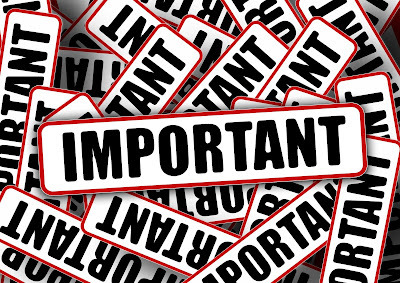
By Terry Whalin @terrywhalin
As writers, our days are full of activity. Can you make some small yet significant adjustments in your writing life and reach more people as a result?
Last spring through my email, I learned that my shopping cart which I had been using for over 20 years was going to close. When I called customer service, they affirmed that they were shutting down because their server was old and not preforming well. I paid this company monthly for a diverse set of tools including my newsletter, the autoresponders for my various lead magnets, and a few digital products that I sold. I didn’t have a technical person managing it for me because I didn’t want to pay those monthly fees. Instead, I had slowly learned to create a newsletter, add new products and new autoresponders. At times the learning curve was steep and I had to reach out to customer service for advise and help. Overall my shopping cart was working but I had a deadline when it would no longer function.
There are a number of companies which serve this function. I did some research and selected where I would change my newsletter. The changeover was overwhelming and something I could not fit into my schedule. I reached out and located a technical expert to move everything. The change was costly and took several weeks and almost everything was moved. There are a few things which still need some clean up.
Through the years my newsletter has been sporadic and leading people to different places. It’s not the path that I would recommend. Over a year ago, I decided issue my newsletter each week. As my subscribers will tell you, I’ve faithfully sent this newsletter each week. My issue was moving those email addresses from my old list. I reached out to a newsletter specialist who has moved and merged several lists into a single newsletter. It has definitely been a process which is almost finished. If you aren’t subscribed to my newsletter, I encourage you to use this link, subscribe and you will receive an 87 page ebook filled with writing encouragement.
Besides my weekly newsletter, I have these articles for The Writing Life which I create each week. I have a smaller group of subscribers who receive these articles on their email. I use a tool called Feedblitz for this list. I used their standard and plain form:
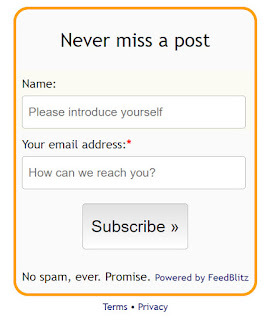 For many years, my form has been the same with no changes or improvements. I wondered if I could make a small but significant change in the form. Then it would be identified to the reader that it was tied to The Writing Life. I reached out to ask for help. They responded with step-by-step instructions. I followed them and changed my subscription form to:
For many years, my form has been the same with no changes or improvements. I wondered if I could make a small but significant change in the form. Then it would be identified to the reader that it was tied to The Writing Life. I reached out to ask for help. They responded with step-by-step instructions. I followed them and changed my subscription form to: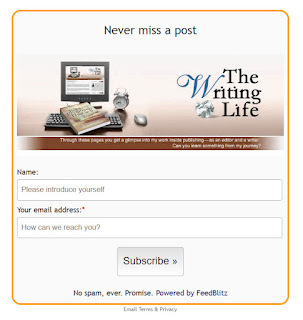 This change would not be helpful if I didn’t promote my new form. As the great circus P.T. Barnum has said, “Without promotion something terrible happens. Nothing.” In my weekly newsletter, I added a postscript with a simple sentence and a link to my new form. I will be doing some additional promotion of this form in the days ahead. It is a simple but true principle that you have to do the marketing otherwise it does not increase. There are dozens of ways and places to do this promotion but it takes continued action to make these increases.
This change would not be helpful if I didn’t promote my new form. As the great circus P.T. Barnum has said, “Without promotion something terrible happens. Nothing.” In my weekly newsletter, I added a postscript with a simple sentence and a link to my new form. I will be doing some additional promotion of this form in the days ahead. It is a simple but true principle that you have to do the marketing otherwise it does not increase. There are dozens of ways and places to do this promotion but it takes continued action to make these increases.I’m telling you these stories to ask you a few questions? What is it you want to improve? Is there a way to make some small but significant changes which will move you in the direction that you want or need to go? I encourage you to take a moment and think about the areas you want to improve. Maybe you need to sell a book project and create a book proposal. Or maybe you want to reach more people through magazine articles or personal experience stories. Or maybe you want to do more speaking or podcasting or any number of other aspects of the writing life.
In straight forward language, write your goals. Then plan how are you going to get there? Who could help you and guide you? Will you email them asking for their help or call them or meet with them on person? As writers we have many choices for each aspect of our lives but need to find the different options then select one and take action on it. Maybe your change or shift will be small or maybe a big shift will transpire. The key is to understand it and move forward.
I encourage you to get the help you need--even if you have to pay for the coaching or training. It is critical for you to keep improving, growing and learning to reach your goals and remain consistent toward them--in spite of any challenges, discouragement, rejection or roadblocks. Recognize the challenges, rejection and roadblocks will come but your persistence and consistency will eventually move you beyond the resistence.
What small but significant adjustments do you need to make in your writing life? Let me know in the comments below.
Tweetable:
What happens to your writing life when you make small and significant adjustments? Read the stories and actions from this prolific author and editor. (ClickToTweet)
New Podcasts:
In these articles, I’ve encouraged you to use PodMatch or some similar tool to book and record podcasts. Last week one more podcast recording launched:
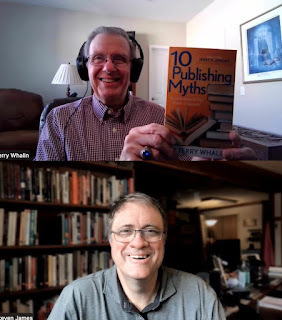
Bestselling novelist Steven James (@readstevenjames) and I talked about the importance of showing instead of telling, looking at the bigger picture, giving readers a reason to flip the page, and The 11th Myth on The Story Blender Podcast: https://bit.ly/3WtbsXJ

Throughout my many years in publishing, I’ve co-authored over a dozen books and reviewed thousands of submissions (no exaggeration). As a part of the process of working with these authors, I speak with them about their dreams and plans. Many of these authors have unrealistic expectations about what will happen with their published book. Many aspects of the details of publishing are outside of anything an author can control. I wrote 10 PUBLISHING MYTHS to give authors practical help. You can get decades of insights in 10 PUBLISHING MYTHS for only $10, free shipping and over $200 of bonuses.
Subscribe to Terry’s Newsletter:
During the last year, once a week I’ve been sending a short free newsletter. Just follow this link to subscribe. When you are added to the newsletter, you will receive a FREE 87-page Ebook which is packed with insights for every writer.
Get these articles on your email:
Since 2004, I have blogged about The Writing Life over 1,800 entries and one of the top 27 content writers. With this simple form, each week you can get my new articles, encouragement and insights at: https://t.co/W6uU64u6aA
Published on November 02, 2025 04:30
October 26, 2025
When You Feel Behind...

By Terry Whalin @terrywhalin
It’s a common feeling but rarely discussed--feeling like you are behind and can’t get caught up. I often have this concern and in this article I want to give you some ideas and action steps for your writing.
I encourage you to recognize that each of us have overwhelming days when there is more to be done like:
More email to answer. More editors to pitch. More places to speak and podcasts to pitch. More books to read and write reviews. More articles to write for magazines.More conferences to attend.More new connections to make and explore.More follow-up calls and emails to send.More social media posts. You get the idea: everyone feels like there is more to be done.
I encourage you to realize everyone (including me) feels like this from time to time. Each of us have the same amount of time in a day and limitations on what we can do. Every day we are making choices how we spend our time. Here’s some ideas for actions each of us can take.
Take a hard look at what you are doing.
Can you ask someone for help or hire someone to help you? Can you say “no thank you” to an opportunity? Recently a long-term writing friend asked me to endorse or blurb her forthcoming book. She offered to write it for me and gave a short deadline for when she needed it. Also she followed up reminding me of her deadline. I didn’t want someone else to write my endorsement and I passed on the opportunity. I recognize the choice and each of us make them every day.
Write shorter emails.
I want to be a good communicator and answer my emails from authors and others. My actions in this area are a simple way to stand out from other editors who ghost writers and do not respond. I can’t answer all of my emails so some of them do not get response. Also I can write shorter emails and responses. These actions can help me to answer more emails.
Repurpose Your Writing.
Each month I have a series of deadlines for guest blog posts and articles. I understand the value of these articles because others read them and follow my links and advice. One option to complete these deadlines is to repurpose or use writing that I’ve done in other places. For example, I’ve written several how-to-write books. I can take a portion of this writing and repurpose it into a guest blog post with only a little revision. If you have written a nonfiction book or a devotional or a Christian living book which contains your stories, you can take these stories and submit them to magazines. When you get them published, they will likely reach more readers than your books and could lead readers to know (and hopefully buy) your books. You can be wise about how you repurpose and use your writing but you have to be thinking about these aspects.
Take a break during the day.
It’s easy for me to sit long hours at my keyboard and work on different aspects of my writing life. Also throughout my day, I need to take care of myself as a writer in this process. Maybe I need to drink more water or walk around the block and get outside. When I take these breaks, I am taking care of physical self but also often return to my keyboard with an increased enthusiasm for my work.
Revise your writing goals.
This week a writer asked me how long it would take to write her book. It's a common question that I hear and answer in an unexpected way. I do not give a word count or page count for the author because each of us are different. I may write a complete book in a few weeks where another author will take all year to write that same amount of material. Each of us have to carve out the writing time, select a word count goal that works for us then do it over and over. If you aren’t meeting your writing goals, then you need to revise them. It's that straightforward.
To wrap up this article about feeling behind, I want to recall the fable of the race between the rabbit and the turtle. Who won that race? The rabbit raced ahead and took a nap but the turtle keep moving forward, passed the sleeping rabbit and won the race.
I encourage you to take the long view of your writing. It is not a sprint but a marathon. Keep chipping away and moving ahead with the work and eventually you will succeed. The only way to stop the progress is to quit.
What actions do you take when you feel like you are falling behind? Let me know in the comments. I look forward to reading them.
Tweetable:
As a writer, do you feel like you are behind? This prolific writer and editor also feels behind. In this article, he gives a series of insights: https://bit.ly/477aerc #writinglife #pubtip (ClickToTweet)
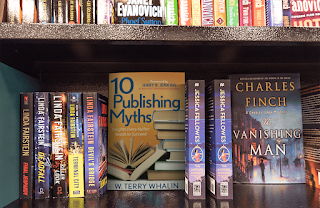
From my years in publishing, I find many authors have unrealistic expectations about publishing. It doesn’t matter what type of book they are writing—fiction, nonfiction, a children’s book or a coffee table book. Each type of book contains its own challenges and complexity. No matter how you publish, many aspects of the publishing process are outside of anything an author can control. I wrote 10 PUBLISHING MYTHS to give authors practical help. You can get decades of insights in 10 PUBLISHING MYTHS for only $10, free shipping and over $200 of bonuses. $200 of bonuses.
Subscribe to Terry’s Newsletter:
During the last year, once a week I’ve been sending a short free newsletter. Just follow this link to subscribe. When you are added to the newsletter, you will receive a FREE 87-page Ebook which is packed with insights for every writer.
Get these articles on your email:
Since 2004, I have blogged about The Writing Life over 1,700 entries and one of the top 27 content writers. With this simple form, each week you can get my new articles, encouragement and insights at: https://t.co/W6uU64u6aA
Published on October 26, 2025 04:30
October 19, 2025
Choose a Path and Persist
By Terry Whalin @terrywhalin
As writers, we have a lot of uncertainty when we choose our path to publication. As you make these choices, there are many different options and paths to succeed with your book.
The three basic paths to publication are traditional, self-publishing, and hybrid/ independent publishing. If you are exploring these options I encourage you to get a free copy of The Babylon Blueprint for Authors by David Hancock. The book includes 40 pages of detailed comparison of these three paths. If you have chosen your path, here’s another reason to get this book. It includes detailed low cost or no cost strategies to market and sell your book.
David is the founder of Morgan James Publishing, one of the top independent publishers and where I’ve worked for the last 13 years. In 21 years, we’ve published over 6,000 titles, sold over 20 million books and many bestsellers (which you can’t do unless you are selling in the brick and mortar bookstores--which we are).
Beyond the publishing paths, after your book is in the marketplace you need to choose which path you will take to gain readers and tell others about your book. Every author has this responsibility--whether they take it or not. Their choices in this area will affect their sales and level of success.
In December 2004, I started blogging about The Writing Life. Here’s the link to my first article about changing. Blogging was new and a number of people reached out to me and cautioned me not to be blogging. They said things like, “You are a busy acquisitions editor at a publisher. You don’t have time to blog.” I ignored these cautions and persisted to write these articles each week. My friends were right because creating these articles takes time and energy from other choices but I continued on the blogging path. I chose to blog once a week. Others gather a team of people and blog every day. Other blog once a month. The frequency is an important choice but equally important is consistent execution.
Through the years, I’ve blogged over 1,800 times. My blogs are different from those early posts. I added royalty-free images to each blog. I also included links to other resources and a call to action at the end of each article encouraging comments. I added the ability for readers to subscribe to my blog and get them on their email (follow this link if you aren’t a subscriber). Also for each one, I’ve added a ClickToTweet so the reader can easily tell others about my articlers.
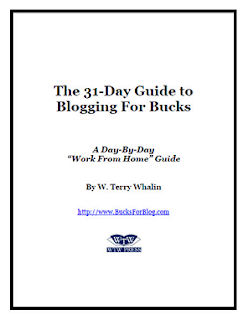 Several factors go into this process. First, I’ve continued to learn more about blogging. I’ve got a free teleseminar where you can learn more about blogging with a free ebook. Also I created a low-cost resource where you can learn how to make your blog into an income stream called
Blogging for Bucks
. Notice the 30 day love it or return it guarantee.
Several factors go into this process. First, I’ve continued to learn more about blogging. I’ve got a free teleseminar where you can learn more about blogging with a free ebook. Also I created a low-cost resource where you can learn how to make your blog into an income stream called
Blogging for Bucks
. Notice the 30 day love it or return it guarantee.
When you choose a path, you need to be consistent and keep on that path to find your audience and persist. Too many people jump from path to path then they wonder why they never got anywhere.
I have signed up for a free tool which searches for my name online in articles and other places. This article explains there are over 600 million blogs and pinpointed the top 27 content producers. My blog on The Writing Life was one of those 27. It’s not that I’m doing anything other than staying on the path (consistency) and writing articles for my readers.
Questions for You
It’s wise to evaluate your path and know which one you are choosing. Then see if you are being consistent. Are you continuing to learn and improve your actions? Is there a course or tool you need to add to the process? I encourage you to keep going. Your persistence may not be evident at first but will pay off in the long run.
While the bulk of this article is focused on my blogging, these questions are the same for a variety of aspects of the publishing world like social media. You can’t be everywhere. Are you selecting a path and then being consistent? Or pitching podcasts then telling others? Are you writing book reviews and joining launch teams, then telling other people about your review on social media? Are you exploring and adding other possibilities to your actions and reach on a consistent basis? The possible choices are endless. It’s why my friend John Kremer wrote 1001 Ways to Market Your Books . For every choice, without your persistent and consistent action, something terrible happens: nothing.
What am I missing or other suggestions do you have? Let me know in the comments below.
Tweetable:
Authors have many possible paths. This prolific author and editor writes about blogging and other choices in your journey. Get the details here. #writinglife #pubtip (ClickToTweet)

Throughout my many years in publishing, I’ve co-authored over a dozen books and reviewed thousands of submissions (no exaggeration). As a part of the process of working with these authors, I speak with them about their dreams and plans. Many of these authors have unrealistic expectations about what will happen with their published book. Many aspects of the details of publishing are outside of anything an author can control. I wrote 10 PUBLISHING MYTHS to give authors practical help. You can get decades of insights in 10 PUBLISHING MYTHS for only $10, free shipping and over $200 of bonuses.
Subscribe to Terry’s Newsletter:
During the last year, once a week I’ve been sending a short free newsletter. Just follow this link to subscribe. When you are added to the newsletter, you will receive a FREE 87-page Ebook which is packed with insights for every writer.
Get these articles on your email:
Since 2004, I have blogged about The Writing Life over 1,700 entries and one of the top 27 content writers. With this simple form, each week you can get my new articles, encouragement and insights at: https://t.co/W6uU64u6aA
As writers, we have a lot of uncertainty when we choose our path to publication. As you make these choices, there are many different options and paths to succeed with your book.
The three basic paths to publication are traditional, self-publishing, and hybrid/ independent publishing. If you are exploring these options I encourage you to get a free copy of The Babylon Blueprint for Authors by David Hancock. The book includes 40 pages of detailed comparison of these three paths. If you have chosen your path, here’s another reason to get this book. It includes detailed low cost or no cost strategies to market and sell your book.
David is the founder of Morgan James Publishing, one of the top independent publishers and where I’ve worked for the last 13 years. In 21 years, we’ve published over 6,000 titles, sold over 20 million books and many bestsellers (which you can’t do unless you are selling in the brick and mortar bookstores--which we are).
Beyond the publishing paths, after your book is in the marketplace you need to choose which path you will take to gain readers and tell others about your book. Every author has this responsibility--whether they take it or not. Their choices in this area will affect their sales and level of success.
In December 2004, I started blogging about The Writing Life. Here’s the link to my first article about changing. Blogging was new and a number of people reached out to me and cautioned me not to be blogging. They said things like, “You are a busy acquisitions editor at a publisher. You don’t have time to blog.” I ignored these cautions and persisted to write these articles each week. My friends were right because creating these articles takes time and energy from other choices but I continued on the blogging path. I chose to blog once a week. Others gather a team of people and blog every day. Other blog once a month. The frequency is an important choice but equally important is consistent execution.
Through the years, I’ve blogged over 1,800 times. My blogs are different from those early posts. I added royalty-free images to each blog. I also included links to other resources and a call to action at the end of each article encouraging comments. I added the ability for readers to subscribe to my blog and get them on their email (follow this link if you aren’t a subscriber). Also for each one, I’ve added a ClickToTweet so the reader can easily tell others about my articlers.
 Several factors go into this process. First, I’ve continued to learn more about blogging. I’ve got a free teleseminar where you can learn more about blogging with a free ebook. Also I created a low-cost resource where you can learn how to make your blog into an income stream called
Blogging for Bucks
. Notice the 30 day love it or return it guarantee.
Several factors go into this process. First, I’ve continued to learn more about blogging. I’ve got a free teleseminar where you can learn more about blogging with a free ebook. Also I created a low-cost resource where you can learn how to make your blog into an income stream called
Blogging for Bucks
. Notice the 30 day love it or return it guarantee. When you choose a path, you need to be consistent and keep on that path to find your audience and persist. Too many people jump from path to path then they wonder why they never got anywhere.
I have signed up for a free tool which searches for my name online in articles and other places. This article explains there are over 600 million blogs and pinpointed the top 27 content producers. My blog on The Writing Life was one of those 27. It’s not that I’m doing anything other than staying on the path (consistency) and writing articles for my readers.
Questions for You
It’s wise to evaluate your path and know which one you are choosing. Then see if you are being consistent. Are you continuing to learn and improve your actions? Is there a course or tool you need to add to the process? I encourage you to keep going. Your persistence may not be evident at first but will pay off in the long run.
While the bulk of this article is focused on my blogging, these questions are the same for a variety of aspects of the publishing world like social media. You can’t be everywhere. Are you selecting a path and then being consistent? Or pitching podcasts then telling others? Are you writing book reviews and joining launch teams, then telling other people about your review on social media? Are you exploring and adding other possibilities to your actions and reach on a consistent basis? The possible choices are endless. It’s why my friend John Kremer wrote 1001 Ways to Market Your Books . For every choice, without your persistent and consistent action, something terrible happens: nothing.
What am I missing or other suggestions do you have? Let me know in the comments below.
Tweetable:
Authors have many possible paths. This prolific author and editor writes about blogging and other choices in your journey. Get the details here. #writinglife #pubtip (ClickToTweet)

Throughout my many years in publishing, I’ve co-authored over a dozen books and reviewed thousands of submissions (no exaggeration). As a part of the process of working with these authors, I speak with them about their dreams and plans. Many of these authors have unrealistic expectations about what will happen with their published book. Many aspects of the details of publishing are outside of anything an author can control. I wrote 10 PUBLISHING MYTHS to give authors practical help. You can get decades of insights in 10 PUBLISHING MYTHS for only $10, free shipping and over $200 of bonuses.
Subscribe to Terry’s Newsletter:
During the last year, once a week I’ve been sending a short free newsletter. Just follow this link to subscribe. When you are added to the newsletter, you will receive a FREE 87-page Ebook which is packed with insights for every writer.
Get these articles on your email:
Since 2004, I have blogged about The Writing Life over 1,700 entries and one of the top 27 content writers. With this simple form, each week you can get my new articles, encouragement and insights at: https://t.co/W6uU64u6aA
Published on October 19, 2025 04:30
October 12, 2025
A World of Possibilites

By Terry Whalin @terrywhalin
Take a moment and think about your life as a writer. As you look around your world, what do you see in your mind? Is the world full of opportunities or is it limited and scarce?
In this article, I want to help you have a wide mindset about your writing life and the possibilities for you. These possibilities only exist if you have the right mindset and take continued and steady action.
Whether you are brand new to the writing world or a bestselling author with many books (like me), no one is beating on your door asking you to go here or there or to do this or that. Every one of us have to craft our emails, phone calls, text, book proposals and query letters. We have to pitch the right person for the opportunity to happen.
As I’ve often written in these articles, who you know is as important as what you know. Only you can write and tell your story.
Maybe you want to publish a book. How can you get a connection to the right person who can help you? Maybe you exchange business cards with them at a writers conference.
Today a writer that I met at a large conference last May reached out to me with simple email. She reminded me of our meeting (wise) and then asked the best way to get started (another wise action). I responded with those answers.
Another author that I’ve known for years reached out to me about a friend with a possible book project. She asked the best way to get started. I encouraged her to send a brief introductory email to me and to her friend. This method is another way to open the door of opportunity.
LinkedIN has millions of people and business relationships. Reach out to someone you want to know on linkedIN and send them a connection invitation. Or look at their contact information and see if you find an email address. The craft an email with your pitch or whatever you need.
Email is often the best communication tool and method to begin the process. In general, everyone reads their email. Sometimes email has it’s own challenges. I receive a lot of email and sometimes when I do not receive a response in a few days, I will send a second email. Or sometimes through the joy of technology, my personal email terry@terrywhalin.com doesn’t always reach me. It’s weird but it happens.
If you met someone at a conference and got their business card, then reach out to them. It doesn’t matter that you met them months (or even years) ago. In the opening paragraph remind them of where you met and then briefly ask for what you need from them.
There is a wise verse in the book of James.”You have not because you ask not.” (James 4:2) Learn to ask in a way which gets a response.
This week I was talking with another author. He mentioned sending his manuscript out to key leaders and asking for their endorsement. I admired his initiative in asking for these endorsements. Yet I also understand mny of these busy professionals will not have the time to read the manuscript. The easiest response for them is “no” or silence (no response).
When you make the endorsement request, craft your request in a different way so you get a positive response. Offer to write a draft endorsement or even write a couple of them (from the endorsers perspective) then send those sentenes with your request. It’s strange to write a couple of glowing sentences about yourself. For the recipient, it is easier for them to revise your sentence and say yes than to write their own endorsement. Your creative request will be different and potentially pay off with a yes response instead of a no.
You can use these examples in other areas like to speak at an event or to be a guest on a podcast or to write for an online publication or a magazine.
Before you pitch, take a few minutes to look at their website, listen to some of their podcasts, read their guidelines for the publication. This groudwork will help you craft your pitch into something they need or will respond positively,
We live in one of the greatest times in human history. In your pocket through your phone, you have the ability to reach people around the world. The possibilities are endless for you and your writing—but only if you take action and keep pitching.
It’s what I’m doing every day. I knock on new doors. I pitch podcast hosts. I propose new writing opportunities. The opportunities are there but only if you seize them.
Several Statements of Truth
The work is never finished. There is always more writing and places of opportunity.
Continue to make new connections.
Continue to explore new publications and places to publish (online and in print).
Continue to learn and explore (and fail) with your reach.
Your persistence and consistency and commitment to not quit will be the difference maker.
I can not do anything about the choices of others. I can try and help but each person controls their own life. There is only one person where I have any control: me.
What am I missing here? Or what opportunities are you seizing or missing? Let me know in the comments below.
Tweetable:
When you look at the writing world, do you see limitations or possibilities? This prolific author and editor sees unlimited opportunity. Get the details here. (ClickToTweet)

A great deal of the publishing process is outside of our control as writers. When I speak with authors, I find many of these authors have unrealistic expectations. I wrote 10 PUBLISHING MYTHS to give authors practical help. You can get decades of insights in 10 PUBLISHING MYTHS for only $10, free shipping and over $200 of bonuses.
Subscribe to Terry’s Newsletter:
During the last year, once a week I’ve been sending a short free newsletter. Just follow this link to subscribe. When you are added to the newsletter, you will receive a FREE 87-page Ebook which is packed with insights for every writer.
Get these articles on your email:
Since 2004, I have blogged about The Writing Life over 1,700 entries and one of the top 27 content writers. With this simple form, each week you can get my new articles, encouragement and insights at: https://t.co/W6uU64u6aA
Published on October 12, 2025 04:30
October 5, 2025
Expand Your Writing Target

By Terry Whalin @terrywhalin
With our writing pitches, we are aiming at some publication or some publisher or some literary agent. I'm encouraging you to shift your writing in a new direction and expand your opportunity in a new direction. If you do, then you will expand your publishing efforts and potentially hit a different target.
As an editor, I often speak with authors focused on publishing a book. I'm actively looking for the right authors and the right books for Morgan James Publishing. If you are going to publish a book, I encourage you to send it to me (my work contact information is on the second page of this link).
I love books and understand their reach yet I also know about their limitations. For example, within the book business if your book sells 5,000 copies during the lifetime of the book, then that is a good number. In the world of magazine writing, it is fairly easy to reach 100,000 or even 500,000 readers with your writing. These two aspects are not a choice of doing one or the other. In this article I want to show you how you can do both and expand your reach and help yourself gain more literary agent and editor attention.
Recently I received a well-crafted devotional book for possible publication. When I spoke to the author, she had never considered submitting a devotion to the Upper Room magazine. This quarterly publication has a circulation of six million. Talk about multiplying your writing efforts. The first step is to read their guidelines and examples of what they need. The Upper Room even has an online submission form for their devotions. Several years ago I wrote four possible devotions and submitted them. Three of my submissions were rejected but one was accepted and published. Before it was published, The Upper Room emailed asking if I would like to publish a blog article on the same day as my devotion. Through studying their blog, I learned occasionally a blog entry would include one website link. I submitted my article and included a link to my book. I seized another opportunity. You can do this as well.
Do your book contain personal stories from your life? Could you take one of these 1,200 to 1,500 word stories and reshape it slightly into a magazine article? Almost every magazine will publish personal experience stories. Learn to write a magazine article. Read their guidelines, then give the editor what they are requesting. At the bottom of your article, you can include a single line (or two) like "Terry Whalin is the author of 10 Publishing Myths and lives in Southern California" with a link to your book. You have expanded your reach with this effort.
If you write fiction, you can also write magazine articles or short stories. Use a current market guide because the details change each year. Read the guidelines and read some articles online, then submit your stories to the publication. It only happens if you submit your articles or stories.
Book editors and literary agents are looking for authors who understand about publishing because these people already know what it takes to get published. You can increase the interest from editors and agents if you publish in magazines. It's one of the reasons I continue to write for different publications. I've shown you the details how you can follow the same path.

Several years ago I recorded a teleseminar about how to get more mileage from your writing. I give a free 27-page ebook with more ideas and details. Follow the link to get this recording and free ebook.
 Finally, I want to give you a valuable resource from the founder of Morgan James Publishing, David Hancock. One of his latest books is
The Babylon Blueprint for Authors
which will help you get promotion ideas. When I speak with authors, many of them decide to self-publish or are looking for a traditional publisher. This book includes about 40 pages which compares self-publishing, traditional publishing and independent publshing (like Morgan James). Follow this link to get your free copy of this resource.
Finally, I want to give you a valuable resource from the founder of Morgan James Publishing, David Hancock. One of his latest books is
The Babylon Blueprint for Authors
which will help you get promotion ideas. When I speak with authors, many of them decide to self-publish or are looking for a traditional publisher. This book includes about 40 pages which compares self-publishing, traditional publishing and independent publshing (like Morgan James). Follow this link to get your free copy of this resource.What steps are you taking to expand your writing target? Let me know in the comments.
Tweetable:
Many writers are focused on books. According to this prolific author and editor with a slight shift they can reach more readers. Get the details: https://bit.ly/46LnFgt #writingtip #pubtip (ClickToTweet)
New Podcasts:
In these articles, I’ve encouraged you to use PodMatch or some similar tool to book and record podcasts. Last week two more podcast recordings launched:

Allison Lane and I discussed how to avoid the publishing mistake that kills your book sales at: https://bit.ly/3KEoVcl

During my years in publishing, I’ve reviewed thousands of submissions and spoken with many authors about their plans and dreams for their book. I’ve found many of these authors have unrealistic expectations about what will happen with their published book. From my experience, many aspects of the details of publishing are outside of anything an author can control. I wrote 10 PUBLISHING MYTHS to give authors practical help. You can get decades of insights in 10 PUBLISHING MYTHS for only $10, free shipping and over $200 of bonuses.
Subscribe to Terry’s Newsletter:
During the last year, once a week I’ve been sending a short free newsletter. Just follow this link to subscribe. When you are added to the newsletter, you will receive a FREE 87-page Ebook which is packed with insights for every writer.
Get these articles on your email:
Since 2004, I have blogged about The Writing Life over 1,700 entries and one of the top 27 content writers. With this simple form, each week you can get my new articles, encouragement and insights at: https://t.co/W6uU64u6aA
Published on October 05, 2025 04:30
September 28, 2025
Fill Your Empty Calendar

By Terry Whalin @terrywhalin
Last week during my Bible reading, I was reminded of an important truth: 168. It’s the number of hours each of us have for our week. How do you fill those hours? Do you have an empty calendar? What steps will you take to fill it with your writing?
I have the same number of hours: 168 but in this article I want to give you some ideas and actions about how you could fill your empty calendar. Years ago, I would make a daily “to do” list and cross things off throughout my day. It has been many years since I’ve used this method to fill my calendar. Instead I have a series of activities which fill my day. If it is something I can do quickly such as answer an email or handle some other task, it doesn’t appear on my calendar. At the moment, I am not writing on a book deadline. When I have such a deadline, I make a specific word count for my writing and plan that into my calendar. I’m going to break my regular tasks into differnet categories for this explanation.
Regular Habits & Deadlines
As I’ve explained in these entries, I have an active social media presence where I post 12-15 times each day and use a scheduling tool. Also I write a blog and post a blog article every week. Plus I have a weekly newsletter which goes out a different day of the week. I use reminders on my phone to keep track of these tasks and deadlines to make sure I meet them.
Follow-up Work
Because of my work with Morgan James Publishing,I have a variety of authors who are at different stages in the publishing process. Some of them have sent me their submissions and I need to schedule a phone conference to see if they are the right fit to publish with us. Others have received contracts and not signed them. I call these authors or email to see if they have questions and encourage them to move ahead. There are internal procedures that I need to follow in this process. When I make a series of these phone calls, it can consume a solid portion of my empty calendar.
Processing New Authors
Individual authors and some literary agents will email me with submissions. I have an internal process to get them into the system then I reach out to them and suggest a recorded conference call. It’s where I speak with them about their book and why they wrote it and their plans for the book. I schedule these meetings on my calendar and in a short amount of time I have a series of meetings for the week ahead.
Answer Emails and Phone Calls
Throughout my day I receive a variety of emails and some phone calls. Recently through LinkedIN (where I have over 19,400 connections), I will get an email from someone asking for my phone number to introduce me to a person. I resist these calls because from my experience they are a huge time waster and not the right place to begin the relationship. Instead, I send them my work email and suggest they start the introduction on email--and normally that kills any further interaction and the time waster phone call. A substantial part of my day is spent on the phone with different authors and my colleagues at Morgan James.
Misc Projects
In this article, I’ve focused on details about what I do for Morgan James Publishing. I have other activities in other things. For example, I’m using PodMatch to pitch podcast hosts and schedule to guest on more podcasts. Also since 2000, I’ve been one of the leaders in an online writer's group called The Writer’s View. As a part of this group from time to time, I’m scheduled to lead a discussion. If you want to join this group, it is a two step process. First you need to create an account profile at: www.groups.io Once your account is created, send a request to subscribe to our group with this link: TWV+subscribe@TheWritersView.groups.io
I have many different activities that fill my empty calendar. I wrote this article to give you some ideas and actions for your own calendar. What steps do you take or am I missing in this process? I look forward to your comments.
Tweetable:
When you look at your calendar, are you facing many empty days? This prolific author and editor gives a series of ideas how to productively fill your empty calendar. (ClickToTweet)
New Podcasts:
In these articles, I’ve encouraged you to use PodMatch or some similar tool to book and record podcasts. Last week another podcast recording launched:

Dan Amzallag and I spoke about 10 Publishing Myths on The Happiness Journey Podcast with Dr. Dan. Listen at: https://bit.ly/3VAZmeA
My Writing In Other Places:
With these articles, I encourage you to publish your work beyond your blog in other places. Below are three articles which were published in other online locations than this blog.

Each month I guest blog at the Blue Ridge Mountains Christian Writers Conference blog. This month I wrote an article about how to increase your writing productivity.

At Writers on the Move, I explain why self-published books are rarely inside brick and mortar bookstores.

Once a month I guest blog about some aspect of book proposal creation for Almost An Author. This month I encouraged readers to delete any hype in their proposal.

Throughout my many years in publishing, I’ve co-authored over a dozen books and reviewed thousands of submissions (no exaggeration). As a part of the process of working with these authors, I speak with them about their dreams and plans. Many of these authors have unrealistic expectations about what will happen with their published book. Many aspects of the details of publishing are outside of anything an author can control. I wrote 10 PUBLISHING MYTHS to give authors practical help. You can get decades of insights in 10 PUBLISHING MYTHS for only $10, free shipping and over $200 of bonuses.
Subscribe to Terry’s Newsletter:
During the last year, once a week I’ve been sending a short free newsletter. Just follow this link to subscribe. When you are added to the newsletter, you will receive a FREE 87-page Ebook which is packed with insights for every writer.
Get these articles on your email:
Since 2004, I have blogged about The Writing Life over 1,700 entries and one of the top 27 content writers. With this simple form, each week you can get my new articles, encouragement and insights at: https://t.co/W6uU64u6aA
Published on September 28, 2025 04:30






